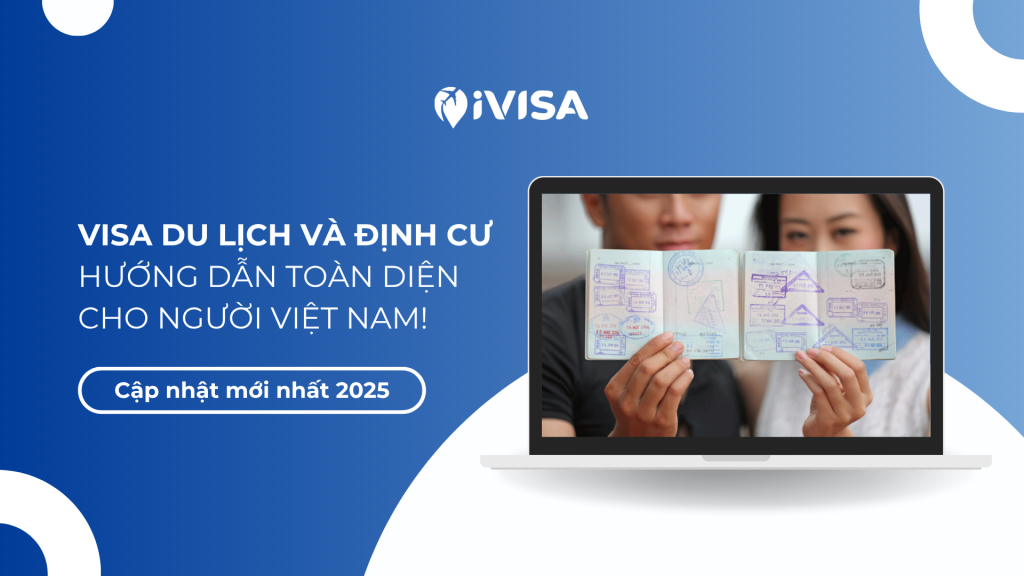Choosing between a tourist visa and an immigration visa is a crucial decision that impacts your entire plan to travel abroad. Understanding the differences between visa types not only helps you save time and costs but also significantly increases your chances of having your application approved.
How Do Tourist and Immigration Visas Differ?
A tourist visa is designed for temporary trips for leisure, visiting relatives, short-term business, or sightseeing. This type of visa usually lasts from a few days to several months, requires simpler documentation, and costs less than an immigration visa.
In contrast, an immigration visa is for those intending to live long-term in the destination country. The application process is much more complex, requiring proof of financial means, educational background, work experience, or family ties to a local citizen. Another important difference is that a tourist visa generally does not permit work or study, whereas an immigration visa grants additional benefits such as working, studying, and even pursuing citizenship.
Common Visa Categories from Short-Term to Permanent Residency
Short-Term Visa
Short-term visas include tourist visas, family visit visas, and business visas valid for 15 days to 6 months. This visa category is suitable for temporary trips and typically features a simple application process and fast processing times. The Schengen visa, which allows free movement across 26 European countries for up to 90 days, is a prime example of a popular short-term visa.
Long-Term Visa
Long-term visas last from 6 months up to 5 years and are typically issued for study, work, or family reunification purposes. A study visa allows you to enroll in educational institutions, while a work visa requires a job offer from an employer. Family reunification visas are for those who have relatives who are citizens or permanent residents in the host country.
Permanent Residency Visa
Permanent residency visas, often referred to as Green Cards, allow you to live permanently in a country. They serve as a crucial step toward eligibility for citizenship in the future. Applying for permanent residency typically involves a complex process, long waiting periods, and high fees, but in return grants many of the same rights as citizens.
Comparison of Requirements in Leading Countries
United States
The United States has the most diverse visa system in the world, offering over 20 different visa categories. The B1/B2 tourist visa requires a consular interview and proof of ties to Vietnam. For immigration visas, the U.S. offers various pathways such as the EB-5 investment visa with a minimum investment of 800,000 USD, the EB-1 extraordinary ability visa, or family-sponsored visas. Waiting times can range from 10 to 15 years depending on the visa category.
Canada
Canada is renowned for its welcoming immigration policies through the Express Entry system. The Canadian tourist visa is relatively easy to obtain with a stable financial profile. For immigration, Canada prioritizes younger applicants with high education levels and strong English/French skills. The Provincial Nominee Program (PNP) offers immigration opportunities for those willing to settle in specific provinces.
Europe
European countries have varying visa policies but are united under the Schengen Area. Germany and the Netherlands require stringent financial documentation for tourist visas. For immigration, Germany offers the Blue Card program for highly skilled workers, while Portugal and Spain attract investors through their Golden Visa programs, requiring investments starting from 350,000 Euros.
UAE
The Dubai tourist visa is quite easy to obtain for Vietnamese citizens, with fast processing, no interview required, and only basic financial proof. Recently, Dubai has emerged as an attractive destination with its Golden Visa policy offering incentives for investors, professionals, and global talents. With a minimum real estate investment of 2 million AED (about 550,000 USD), investors can obtain a 10-year residence permit without sponsorship or continuous stay requirements. Additionally, this visa applies to entrepreneurs, PhD holders, researchers, and outstanding students, broadening opportunities for various groups. Dubai has no personal income tax, streamlined procedures, and a processing time of around 1–2 months. It stands out for those looking to settle, invest, and thrive in a dynamic international environment without requirements for origin, language, or a second nationality.
Choosing the right visa type not only helps you achieve your personal goals but also optimizes costs and time. Consult visa experts to get advice tailored to your specific situation. Whichever path you choose, thorough preparation and a clear understanding of the process will greatly increase your chances of success.

